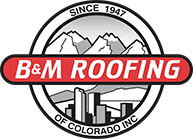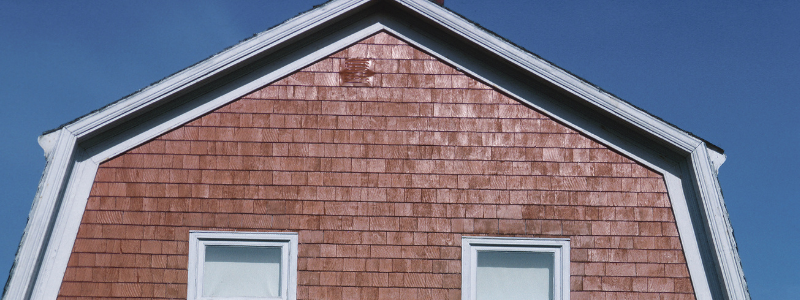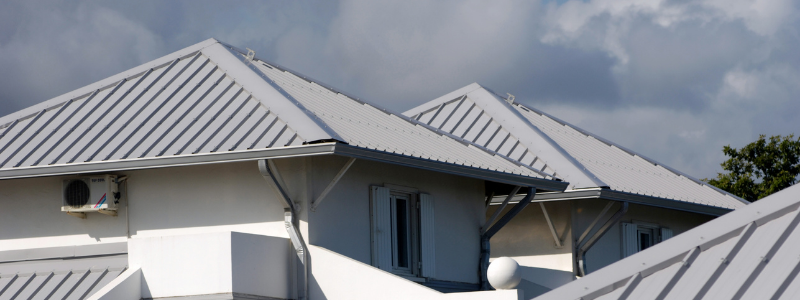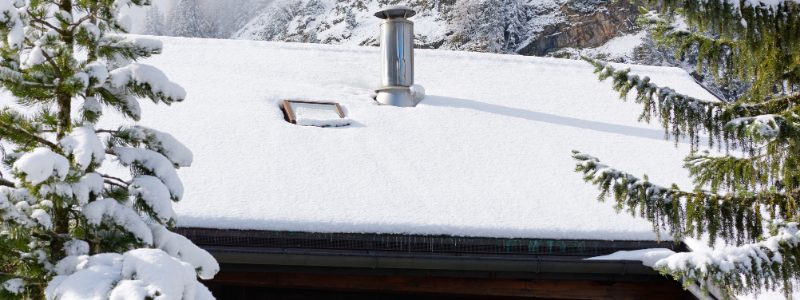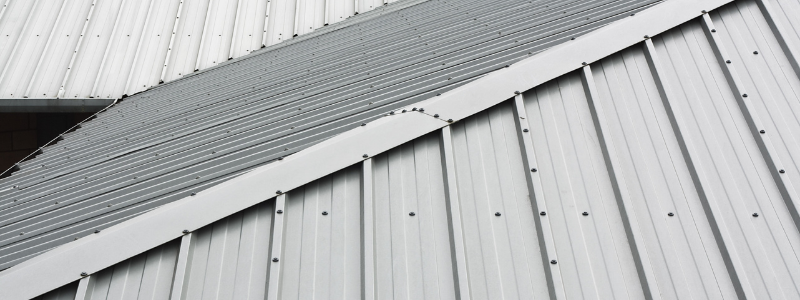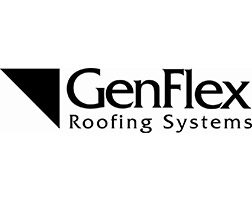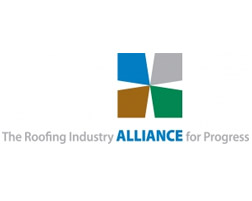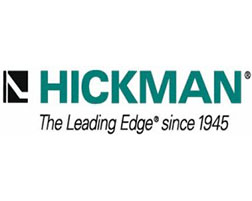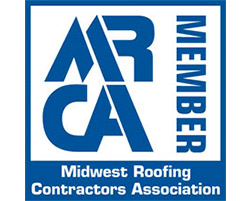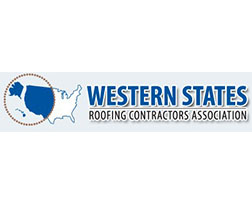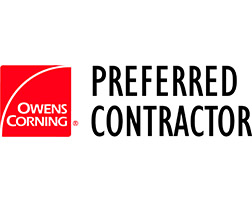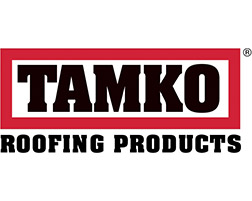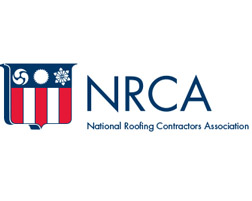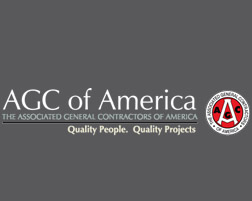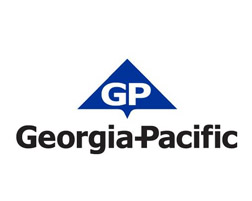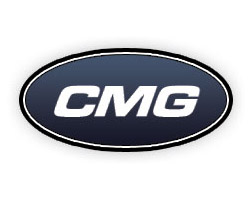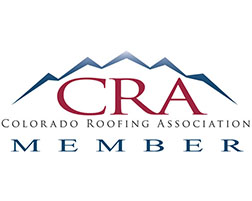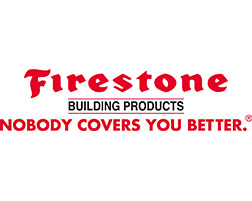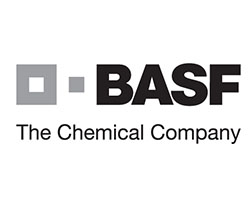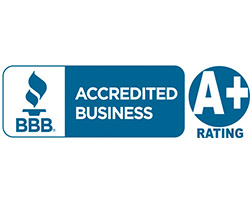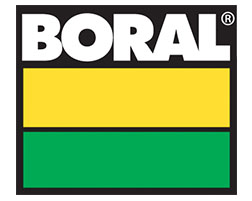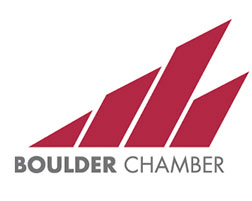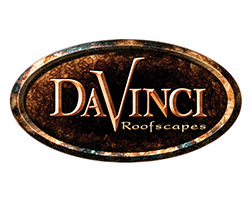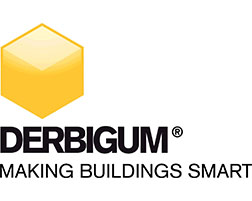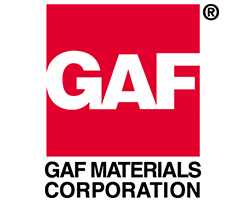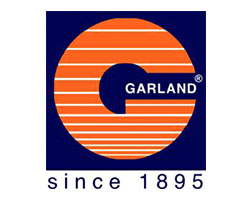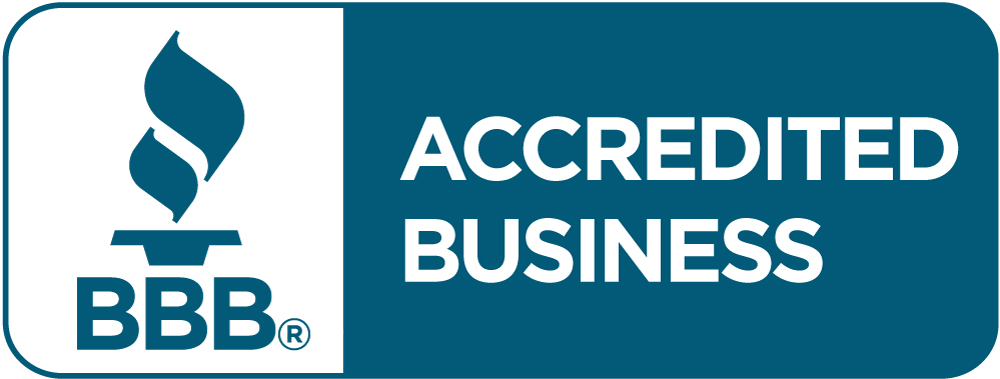House Roof Types
The roof of your home doesn’t just protect the contents and residents. The shape of the roof plays a significant part in the overall appearance and architectural style of your home.
Some house roof types can even provide additional living space or storage space.
A well-designed and properly maintained roof makes your home more resilient to Colorado’s sometimes-severe weather conditions. The roof can provide increased energy efficiency and weatherproofing. This can also cut home heating and cooling costs.
So what are the most common house roof types in Colorado?
Most Common Colorado House Roof Types
In Colorado, the choice of roof shapes is somewhat dependent on weather. The architectural design that is your personal choice may have to be weighed against what is practical in a state that gets extremes of wind, snow, cold, and heat.
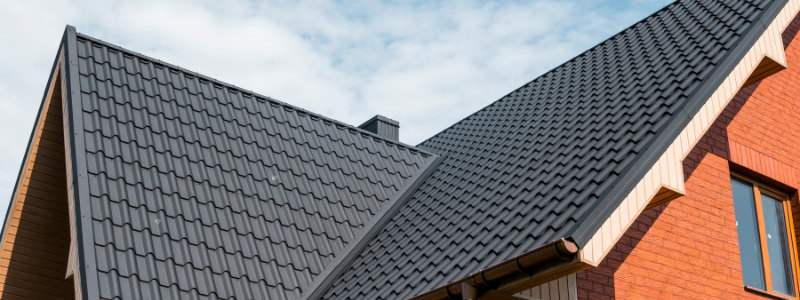
Gable Roof
Gable roofs are often referred to as “inverted V” shapes. Gable roofs slope on two sides: front to back or side to side. There are variations like box gables, open gables, Dutch gables, and gable roofs with dormer windows.
Gable roofs are simple but effective. It is important to get a gable roof pitched just right for Colorado weather conditions.
In Colorado, care must be taken to keep the angle of the slope high enough to allow rain and melting snow to drain off the roof effectively. If the pitch is too low, water lying on the roof may cause damage to the shingles and the underlying structure. However, if the pitch is too high, high winds may damage the shingles and even tear off the roof.
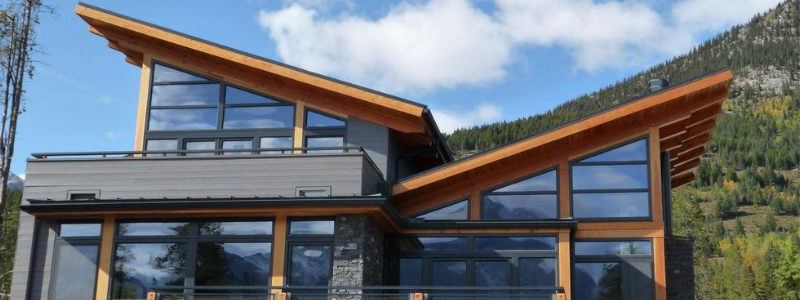
Butterfly Roof
This roof shape has often been called a “reverse gable”. The butterfly design slopes from the outside into the center. This roof type is common with modern, contemporary-looking houses.
Because the pitch is not high, the roof shape offers less wind resistance. However, sloping toward the center causes snow, ice, and rain to collect on the surface.
The fact that this type of roof slopes toward the center makes drainage even more problematic than with a flat roof.
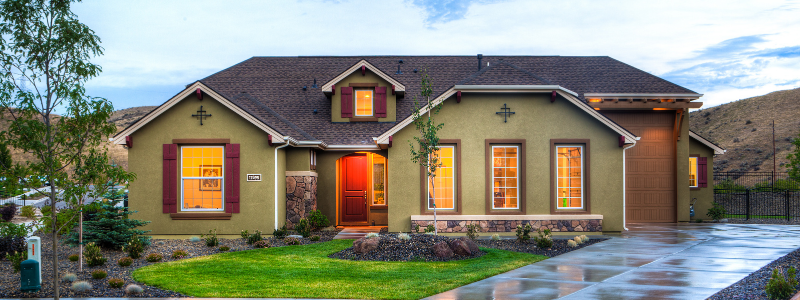
Hip Roof
Hip roofs are popular in Colorado. The sides come together at the top to form a simple ridge. A hip roof has slopes at all four sides of the house.
Pitch is also important with a hip roof. Like gable roofs, the slope on hip roofs must be just the right balance to drain rain and snow but so high that wind resistance is a problem.
Hip roofs are more stable than roof types like gambrel and gable. The inward slope of all four sides makes hip roofs both sturdy and durable.
Given Colorado’s climate, hip roofs are a good choice because they withstand both high wind and heavy snows. The pitch allows snow to easily slide off and avoids standing water.
Dormers or crow’s nests in hip roofs provide extra living space.
The downside is that hip roofs are expensive when compared to gable or A-frame roofs. Their more complex design means more materials and labor so higher costs.
When additional dormers or crow’s nests are added water may collect in seams and cause leaks.
Variations of the hip roof include hip-and-valley roofs, intersecting hip roofs, cross-hip roofs, and pyramid-hip roof shapes.
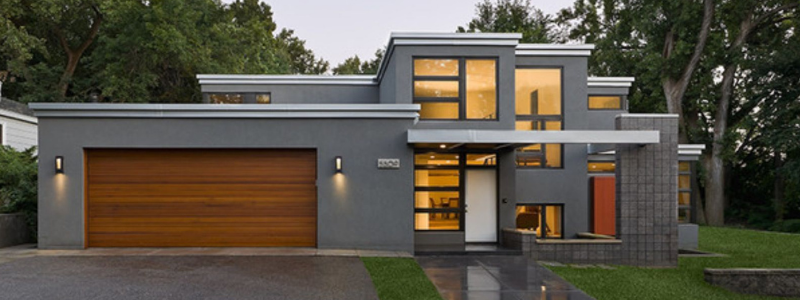
Flat Roof
Flat roofs and butterfly types of roofs are more common in business structures than in house architecture. However, these roof types are becoming more popular in housing developments.
The advantage of a well-designed flat or butterfly roof is that the shape can offer added outdoor living space. You can add a rooftop garden, patio, or partially enclose a penthouse room. HVAC systems can also be placed on a flat roof out of sight. This roof shape works well for wind resistance.
Flat roofs are cheaper and faster to build because they require few materials and less labor.
One disadvantage is that flat roofs present problems with drainage. Snow, ice, and rain collect on the flat surface. For this reason, flat roofs are not recommended for Colorado climates where there is a lot of snow and rain. Low to no slow also causes problems with weight buildup and often results in leakage into the home as it does with butterfly-shaped roofs.
Flat roofs cost less to build but they can be expensive to maintain and repair.
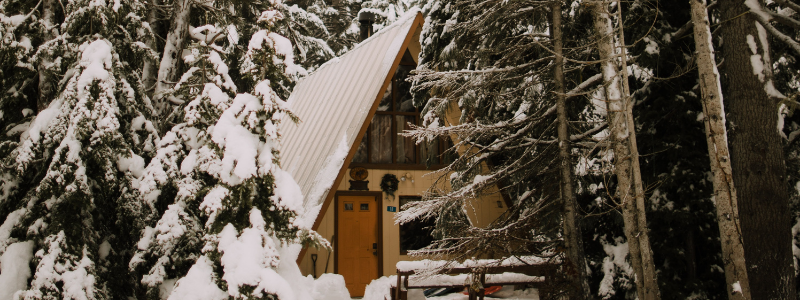
A-Frame Roof
An A-frame roof is easy to identify. It is a steep, pointed, inverted V. The roof goes all the way to the ground, taking up much or all of the house walls. You’ll see this type of house roof in wooded areas, where a lot of snowfall is expected.
A-frame roofs are simple and cheap to build. The A-frame roof doubles as all or part of the home’s sidewalls.
Besides being inexpensive to build, A-frame roofs are pitched so steeply that water and snow do not accumulate.
There are disadvantages, however. A-frame roofs can make the interior of the home dark. The inside walls are sloped. This limits potential space on the second floor. Not every design lends itself to an A-frame type of roof.
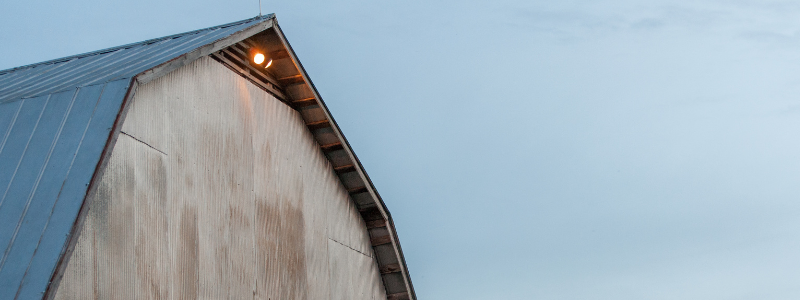
Gambrel Roof
A Gambrel roof is often referred to as a barn roof. It has two different slopes. Unlike the mansard roof style with four sides, the gambrel has two sides.
The lower side of the gambrel roof has a steep, almost vertical slope. The gambrel roof style is popular in farmhouses, log cabins, sheds, workshops, and storage buildings.
Advantages of the gambrel style include extra living space. Homes with gambrel roofs often have garrets, attics, or lofts. Gambrel roofs tend to be less expensive than some roof styles because they are quicker and easier to frame. The style uses only two roof beams. Thus, less material is required.
However, there are some disadvantages. The steep pitch makes a gambrel roof not a wise choice for areas where there are high winds and/or heavy snowfall. The roof style is likely to collapse under heavy pressure. If gambrel roofs are not well constructed the ridges can leak. Gambrel roof ridges must be repaired frequently to keep them watertight. Yearly inspections and repair avoid storm damage.
There are several variations of the gambrel-style roof including gazebo-type roofs and mansard roofs. Some gambrel variations are referred to as French-style roofs, “jerkinhead” roofs, and “saltbox” roofs.
Single properties may include several roof types.
Why Choose a Roofing Specialist?
No matter which roof type you choose for your home, the roof requires annual inspection and repair.
Roofing specialists like B&M Roofing have the expertise and experience to deal with the unique needs of every roof style. Regardless of the roof style, it is important to have your home’s roof checked yearly by knowledgeable roof repair specialists.
When your home has been damaged by Colorado’s challenging weather conditions, it is crucial to choose a Colorado roofing company that can restore your roof, the gutters, downspouts, windows, doors, and siding to their original condition.
To discuss which house roof types are best for you and your family, reliable roof repair or replacement, or to request a free estimate for your home, contact us.
How Long Does a Roof Last in Colorado
Colorado weather poses a challenge for roofs. As one forecaster noted, within a single day, areas of Colorado can see rain, snow, high winds, hail, downpours, and beating sun. So, how long does a roof last in Colorado?
There are several factors to consider. Weather is a major consideration.
Colorado has cold and snow during the winter season. This is a challenge for the longevity of your home’s roof. Heavy snow and the build-up of ice pose a challenge for roofs in Colorado. During spring and fall, Colorado often receives heavy rainfall. During these seasons, leaks are not uncommon. In high-wind areas of Colorado, roof materials may be blown off. This can also cause leaks. Colorado has two hundred and fifty or more days of sunshine.
While sunshine is very appealing to people relocating to the state, it is not so healthy for your roof. With Colorado’s high altitude comes the intense sun. This can cause roof materials to crack, blister, melt, and fade. Winds are also a factor. Two things cause Colorado winds. In the winter, the difference between strong low pressure and cold, high-pressure systems produces wind. Chinook winds also develop across mountain ranges. While Colorado winds are good for wind power generation, they can be hard on roofs. Usually, winds between seventy and ninety miles per hour cause roof damage. Even gusts of only fifty miles per hour may also cause damage that requires roof repair.
The lifespan of Colorado roofs is shortened by weather conditions like sub-zero temperatures, blistering heat, hail, heavy snows, torrential rains, and high winds.
Roof Slope Challenges
Flat roofs are stylish, modern, and efficient. However, in Colorado’s snow and cold, they are not necessarily a wise choice. Low-sloped roofs have a reputation for cracking, collapsing under the weight of snow, and leaking in excessive rains.
Higher pitched roofs allow gravity to work in their favor. Snow, rain, and melting ice slide off whereas with lower sloped roofs you need an effective drainage system and a strong building structure to prevent roof damage and leaks.
Range of Roof Life in Colorado
Many things factor into your roof’s lifespan. At B&M Roofing, we estimate a Colorado roof will last between fifteen and thirty years. Manufacturer’s warranties may be anywhere from thirty to fifty years. However, these estimates depend on things like temperature extremes, weather conditions, and maintenance.
The type of roofing material is also a factor. Asphalt shingles, for example, do better in colder climates than in tropical heat.
Clay or concrete tile roofing is very durable and resilient. However, because they are so heavy, they must be installed on very sturdy roof structures. Clay or concrete roofs will last fifty to a hundred years.
The most durable roofing material is slate. It is expected to last a century or more.
Wood shingles have a lifespan of between twenty-five and thirty years if they are properly maintained. However, the roof must be kept free of moss and twigs so moisture is not trapped on the shingles. Fire is also a danger with this type of roof.
Cedar shakes are thicker than shingles. This means they are a good choice for Colorado’s intense heat and harsh cold winter weather. Wood shakes must be maintained to give them a lifespan of thirty-five to forty years.
Metal roofing is very resilient. Most metal roofing is steel or aluminum with a lifespan of fifty years. Copper or zinc roofing will last a century or more.
Why Get a Roof Inspection?
A new roof can prove pretty costly. With regular roof inspections, you can expect your roof to last longer. So, savings are significant.
Roof inspectors look for wear and tear on your roof. They can accurately estimate the life of your roof. They will make recommendations regarding necessary repairs. Certified roof inspectors can identify unsafe areas and roofing that is in poor condition. Roof inspectors will look at both internal and external components of your roof.
Roof Maintenance
Roof maintenance should occur twice a year. Whether it is done by the homeowner or a certified roof maintenance company, roof maintenance will pinpoint small concerns before they become costly to repair or replacement problems.
Some roof maintenance strategies are simple. Others may require a certified roof maintenance service.
- In the spring and fall, do a check from the ground. Look up. Do you see any lifted, curled, or missing shingles? Are there damaged drip edges? Are flashings buckled or missing? Are fasteners damaged or missing? Are any gutters sagging or broken? Do you see piles of granules?
- Cleaning gutters is a job better done by roof maintenance experts. If it isn’t done two or more times a year, water can back up. This can rot fascia.
- Make sure to trim trees. Leave no branches hanging over or touching your roof. Branches can fall in the wind and damage the roof.
- When you do your inspection, look for evidence of moss or algae. Remove roof debris and overhanging branches to keep moss and algae off the roof. Make sure the attic is properly ventilated.
- Check the caulking on the flashings. If it is cracked or pieces are missing, it needs to be re-caulked. Call an expert.
- Do an insulation check in your attic. Good insulation and ventilation in your attic will extend the life of your roof. Insulation prevents the formation of ice dams and reduces moisture on your roof.
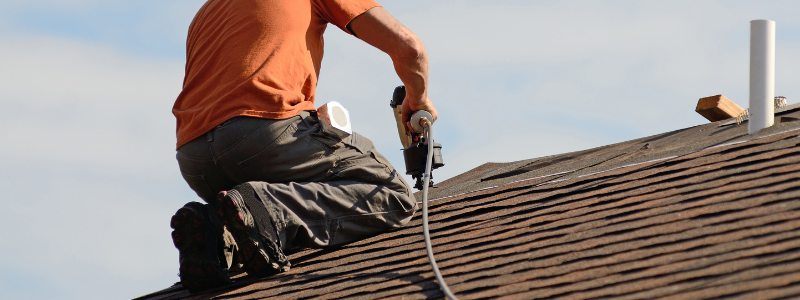
Why Choose B&M Roofing?
When it comes to roof replacement, repair, or maintenance, you want a company that specializes in roofing.
Our Colorado-owned company has recently celebrated seventy years of dedicated service. Our commitment to excellence is evident in every job we do. No roofing project is too big or too small. Each new roof or repair receives our experience and expertise.
Our work extends from commercial projects like the Denver Coliseum and Coors field to residential new constructions and emergency repairs.
B&M Roofing started in Fort Collins in 1947 as a single-truck enterprise. We now provide meticulous service to thousands of customers annually. While we’ve grown bigger, we continue our commitment to total customer satisfaction we vowed to provide seventy years ago.
Average Roof Replacement Costs
At B&M Roofing, we understand that roof replacements are not an everyday occurrence for homeowners. When they do happen, it’s often due to an aging or compromised roof that needs attention. This means that budgeting for a roof replacement is rarely a priority in the home improvement financial plan. So, how much should you expect to spend on an average roof replacement? Let us break it down for you.
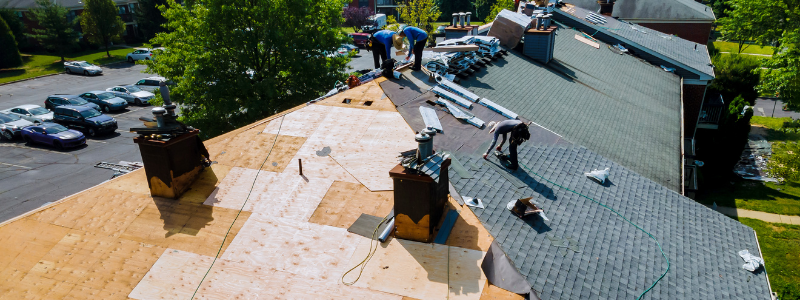
How Much Does the Average Roof Replacement Cost?
Want a quick answer? You’ll want to budget between $4,200 and $6,600 for replacing a 1,600-square-foot roof. This estimate assumes materials like asphalt roof shingles. If you use materials like metal, wood shingles, or clay tile, the cost could increase to between $9,500 and $16,000.
For a more accurate assessment of your roof, consider using a roofing replacement cost calculator app.
How are Roof Replacement Cost Estimates Determined?
When experienced roofing contractors arrive to provide a free estimate, they take into account several key factors. This is how they give an accurate cost analysis.
Roof Measurement
Roof measurements are taken digitally. Roofing contractors utilize technology such as satellite imagery and drones. Their calculations take into account factors such as the slope, roofline peaks, and the overall complexity of your roof.
Roof Inspection
In a thorough roof inspection, roofing contractors assess the condition of your roof. This helps them determine the project’s scope.
Roofing Materials
Experienced roofing contractors will explain the advantages of various materials and make recommendations concerning the best roofing system materials for your home or business. They will factor in such things as shingles, ventilation, roof accessories, and warranty.
Calculating Costs
Once the roofing contractor has obtained this information, the company is prepared to provide an accurate estimate of the question: How Much Does the Average Roof Replacement Cost?
The roof replacement specialists will factor in labor, materials, warranty, permits, the cost of removing old materials, and cleanup.
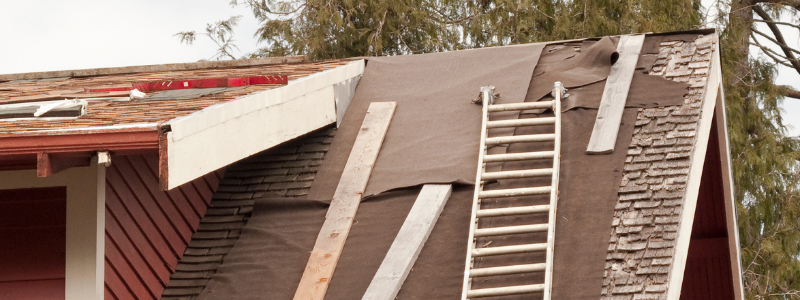
Key Factors in Roof Replacement Costs
Many variables factor into the answer to the question: How Much Does the Average Roof Replacement Cost?
Roof Size
Roofing specialists calculate the cost of roof replacement on a square footage basis. The roof area is one of the most significant factors to consider when determining the cost of an average roof replacement.
A U.S. Census figure notes that the average house roof in the United States is approximately 1,700 square feet.
Roofing Materials
The second most crucial factor to consider in the cost of roof replacement is the type of materials used. Asphalt shingles are both popular and economical. Metal roofs, wood, slate, clay, or solar tiles are more expensive. However, these materials often have other benefits. They may provide better curb appeal, extra insulation, or solar power for your home.
Roofing materials range in price from $100 to $1,000 per square foot. Experienced roofing contractors can help you determine the best roofing materials for your budget.
Roof Complexity
Steeper roofs require more staging and safety precautions. They usually take longer to install. Thus, labor costs will be higher.
The pitch is not the only consideration. Roofing contractors also factor in chimneys, skylights, and ventilation pipes. It takes extra time to work around these complexities.
The complexity of the roof design must also include various changes in the roofline. These can result in both extra labor and materials.
Location
The cost of roof replacement depends on your location. Fluctuations in cost may reflect regional differences in cost of living. Material and labor costs vary based on climate and other factors.
For example, the average roof replacement cost in Denver is slightly above average. A survey of roofing contractors in various parts of America revealed that prices range from $4,500 to $10,000 to replace a roof.
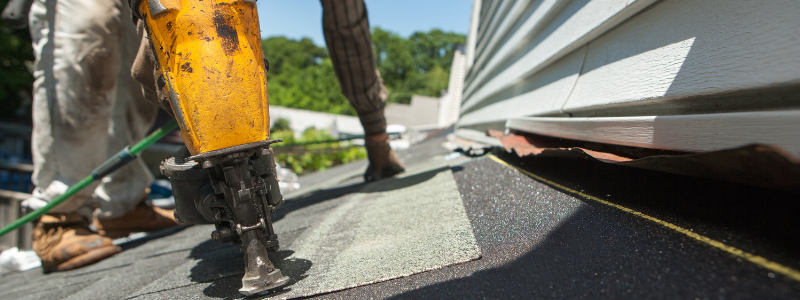
Why Replace Your Roof?
A new roof is a significant expenditure. However, there are many reasons it makes sense to replace it.
Roofs in good repair withstand weather to protect your building. Their average lifespan is twenty years. By replacing your roof, you safeguard against issues such as loose shingles and moisture that can leak into your home, as well as mold and mildew that can affect the health of your home and its occupants.
Failing to replace a roof can have several negative impacts:
- Water leaks occur when your roof loses its protective barriers. If worn, cracked, or missing shingles are not replaced, the problem may escalate, causing structural damage to your home.
- Roof leaks can affect walls, causing them to deteriorate and collapse. Roofs that are not replaced weaken and fail to support the weight of water, ice, or snow. Ceilings and walls may collapse. The result is major structural repairs to your home.
- Old leaking roofs breed molds and mildew. Breathing these dangerous spores can lead to headaches and chronic breathing difficulties.
- Damaged roofs are also invitations to vermin, pests, and animals. These visitors can chew insulation and wiring. Rodent infestations can also cause disease and property damage.
A well-maintained roof also helps the heating and cooling system work effectively. This can result in a considerable reduction in energy costs. An unattended roof repair will increase electricity bills. Holes that cause leaks allow cold air to escape during the summer heat and let in cold air during the winter.
Roofing Replacement Return on Investment
The exterior of your house is the first thing prospective buyers see. A new roof can increase home value by as much as 30%.
While a new roof can be expensive, it may be a worthwhile investment when considering the potential negative impact your current roof could have on your sale. Your new roof will result in faster, more, and higher offers when you sell your home.
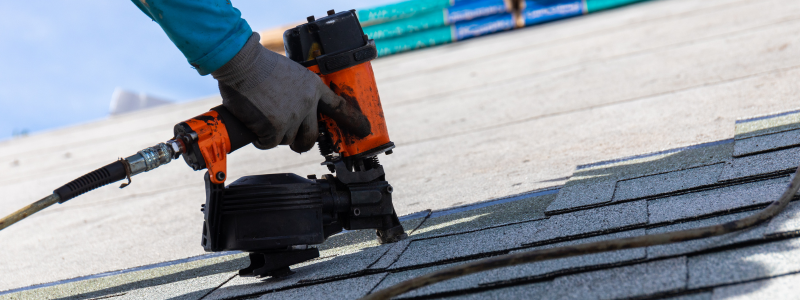
Why Choose B&M Roofing For Roof Replacement?
Roofing replacement projects can be quite a financial undertaking. That’s why it’s essential to hire a roofing specialist with proven experience. The experts at B&M Roofing of Colorado are equipped to help you with any project you throw at them! To receive a free estimate for your project, please get in touch with us by filling out this form or calling 303.443.5843.
How to Choose a Roof for your Home
When it’s time to get a new roof, many homeowners wonder which roofing type is ideal for their home. Many consumers explore many roofing types rather than merely replacing their existing roofing systems. While many considerations weigh into the decision, including covenants and personal esthetic preferences, each type of roofing has its own advantages. Don’t know how to choose a roof for your home? Here are some ideas…
Types of Roofing Materials
If you’re wondering how to choose a roof for your home, we’ve included a list of different types of roofs to consider:
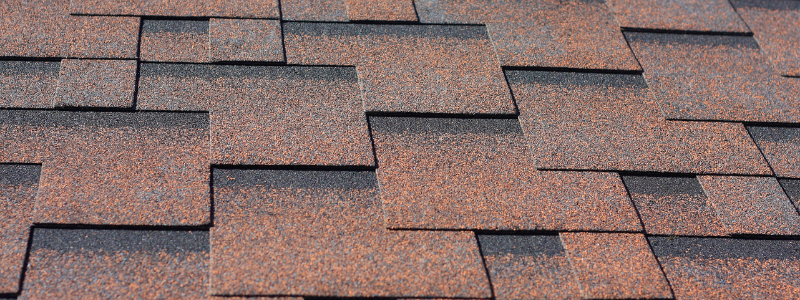
Asphalt Roofing
By far the most popular choice for roofing material, asphalt shingles are available in many colors to suit many homeowners’ tastes. We’ve installed our fair share of asphalt shingles and there are a couple of reasons for this:
- They are the most common, with over 75% of American roofs having them.
- They are the least expensive, costing homeowners about $50-$100 per square.
- They are one of the easiest to install, on just about any architectural style.
- They are one of the most affordable of all roofing materials and since they’re easily replaceable, this type of roofing style can cut down your repair costs.
- Asphalt shingles can usually last more than 30 years, depending on the weight of the shingle. These shingles are very fire resistant, as well.
- They can come in a variety of styles, making it easy to select shingles that will complement the style of your home.
However, you might want to consider the downsides to having asphalt shingles as well:
- They have a low R-value (insulation value): Being a thin material, their resistance to heat (and cool) flow is very low.
- They have a shorter lifespan: Compared to other roofing shingles, asphalt shingles don’t last long, lasting from only 15 to 30 years.
- They are not eco-friendly: They have the least-green roofing option to have on your roof and are not recyclable.
Metal Roofing
A more durable solution than traditional shingles, metal roofing systems also offer more leeway for architects’ designs to flourish, making it a favorite among high-end builders, though are typically much more expensive than other options. Lightweight and virtually fireproof, metal roofs withstand extreme weather well.
Homeowners can reasonably expect to get 50-60 years of service life from a metal roof, though that means you may be investing in a roofing system that will be around a lot longer than you’re in the house.
Metal roofs have a very high life expectancy. They’re weather-resistant, and offer especially good protection from high winds and snow. They are also fire-resistant, earning a Class A fire rating, which means it’s the most resistant.
While metal may seem like an odd roof choice, its range of styles and colors make it an excellent option for giving a modern update to older houses and buildings.
They are also remarkably low maintenance and generally come with a 20- to 40-year warranty. Even though the initial costs of a metal roof will be more than traditional materials, the minimal maintenance and low replacement costs will help save money in the long run.
Wood Shakes/Shingles
Many homeowners prefer the more natural look of cedar shakes and shingles for their roof. While more expensive than traditional asphalt shingles, you can expect them to last 30-40 years if maintained well. Cedar shakes and shingles are more resistant to extreme weather and more energy-efficient than asphalt options but are also more costly.
Wood shingles are small, light, and severed on both sides. Wood shakes are generally thicker and are hand-split. The most common wood shingles are cedar, which are longer-lasting and more fire-resistant. Fire-retardant coatings are typical with wood shingles. Take into consideration wood shingles require a steeper roof to get rid of moisture.
Wood shingles are beneficial for the following reasons:
- Natural Beauty – The character of wood shingles blends nicely with the landscape and other surroundings. Its natural color and look enhance your home’s overall curb appeal and over time, the cedar will change to a more old-fashioned, silver color.
- Lightweight – Second to asphalt shingles, wood (cedar) shingles are one of the most lightweight roofing materials, making them easier to repair.
- Insulation – Cedarwood is a natural thermal insulator, keeping your house cool during the summer and lowering the heating bill in the winter.
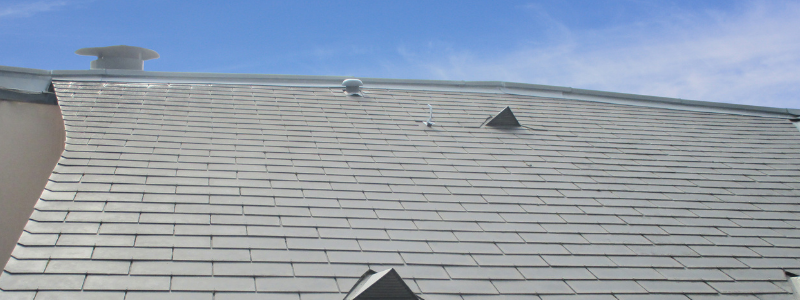 Tile and Slate
Tile and Slate
Homeowners who demand high style often choose tile or slate roofing systems. Concrete or clay tiles are available in numerous styles, from classic Tuscan tiling to fire-resistant concrete replicas of shake roofing.
While many tile and slate roofing systems are engineered to last up to 50 years and are highly resistant to Colorado weather, the roofing underlayment may need to be replaced every 20 years, requiring maintenance many homeowners don’t foresee. Also, because of the weight of these roofing systems, many homes must be structurally reinforced to accommodate them.
Clay Tiles
Clay tiles are all-natural and are fired in a kiln. They are generally one of the most expensive and heaviest of roofing materials. Clay tiles will last a long time, however, as they are environmentally friendly and are resistant to both freezing and hot temperatures, as well as the sun’s harmful UV rays.
However, they are more vulnerable to cracking in Colorado’s extremely low temperatures. There are some benefits, though, like:
- Insulation – Since hot and cold temperatures don’t affect clay tiles as much as other roofing materials, clay is a natural insulator, keeping the energy bill low.
- Low-maintenance – Clay tiles don’t absorb water, mold, or mildew very well, making them basically maintenance-free.
- Color – Clay tiles don’t lose their color much since they are a natural roofing material.
Slate Tiles
Slate tiles are natural, shingle-like, flat sheets of rock. Slate tiles can also be very pricey and heavy for your roof, but the stone look provides plenty of curb appeal to your home. Because of their weight, slate tiles do require extra roof support and framing.
This roofing material requires professional installation, as walking on these tiles can be difficult and result in breaking the stone slates.
In Colorado, these are the most common roofing options we’ve seen in our experience. We can also assist you in how to choose a roof for your home and what it consists of.
If you’re still wondering how to choose a roof for your home, our roofing experts can talk with you about your ideas, your budget, and your needs.
New Year’s Resolutions for Your Roof
With 2021 right around the corner, you’re likely thinking about self-improvement. While we’ll always support your efforts to eat better or read more books, we’d really love to see you make a resolution to treat your roof right. Trust us: It’ll be easier to stick to this one than it will be to quit snacking right before bedtime.
Make the new year the one you start keeping an eye on your roof, and it’ll also become the year you spend less on repairs and other maintenance. What homeowner doesn’t want to see that? Here’s our four-point approach to make your roof’s new year as great as possible.
Get Out the Ladder: If you’re comfortable using a ladder to get on your roof, make inspections a part of your annual maintenance schedule. Many small problems can’t be seen from the ground, and so you’ll need to spot them with a thorough, close-up inspection.
Mind The Landscaping: Roofing is intended to protect your home from the weather, not repel trees. Keep branches trimmed away from your roof each spring and fall, and prevent damage. Similarly, make the effort to clean your gutters and downspouts of leaves and other debris every fall to ensure proper drainage.
Know Your Roof: Every roof eventually needs to be replaced. Do you know your roof’s expected lifespan? Stay in front of repairs – and the damages to your home that can be caused by a failing roof – by knowing when it’s time to start planning for a new roof.
Don’t Be a Fair-Weather Friend: Of course your roof is going to function great on those beautiful Colorado June afternoons. It’s when the weather isn’t so accommodating that issues start to show. Pull out your umbrella and – safely from the ground – take a look at how water drains. If you notice pooling, strange drainage patterns or backups in your gutters, it’s a good sign you need to wait until the weather clears and address issues before they turn into leaks.
As far as resolutions go, pledging to pay better attention to your roof in 2021 is about as easy as it gets: Schedule a couple of hours a few weekends a year, and you’ll be in a great spot to extend your roof’s lifespan and prevent costly repairs.
Buying A House With A 20-Year-Old Roof
A roof is a home’s most important facet. Without a roof – or, without a good roof – everything in that home is susceptible to rain, snow, intense wind, strong heat, UV rays, and so much more. But, with a roof – a good, new one, in particular – your home is completely protected, ensuring that you and your loved ones are safe and that everything you own is completely protected.
Because of this, when searching for a new home, it is so important that you pay close attention to the age and wear of the roof of each house that you look at.
Buying a house with a 20-year-old roof means that, in the near future, you may be facing roof repairs or a roof replacement.
Inspect The Roof Before Purchasing The House
Just about every house that you find for sale will have some wear and tear. But, there are some houses that have older roofs – twenty years old, for instance – and these roofs have seen a lot more wear and tear than the roofs on other houses. Making sure that the roof of your new home is in decent shape, while also determining whether repairs are necessary for the near future, is extremely important. To accomplish both tasks in as little time as possible, having the roof inspected before you purchase the house is the best choice.
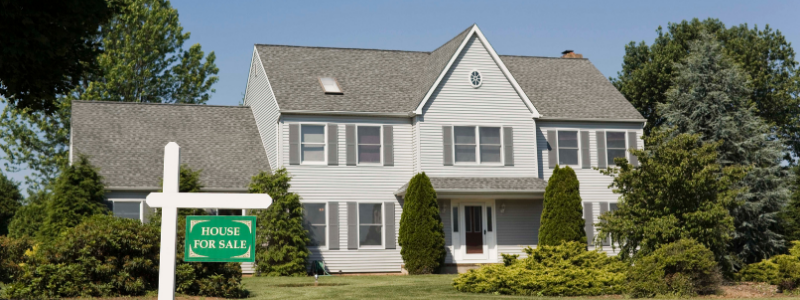
Your Budget Should Account for Roof Repairs
Even if you feel confident in the house that you’ve chosen to buy, if the roof is very old, then an inspection is a necessity. By purchasing the house, without having the roof inspected, it’s likely that a series of unforeseen issues may arise, most of which will be due to the roof’s age. But, if you have the roof inspected before you purchase the house, you can determine the condition of that roof, whether repairs are necessary and, if so, what those repairs are and when they should take place.
By doing an inspection before purchase, you can add into account the cost of roof repairs when you make an offer on the house.
A professional roof inspection consists of inspecting the roof’s exterior and, then, the roof’s interior. The roof exterior inspection consists of going onto the roof and examining the condition of the roof shingles, flashing, and chimney. The roof interior inspection consists of going into the attic and checking the insulation and ventilation, while also checking for leaks and mold. Right after the inspection is complete, you will learn the condition of the roof, any issues that are present, and what needs to be done to fix those particular issues.
What Should You Look For In An Old Roof And When Should You Walk Away?
As you look for your new home, there are a few attributes of each house’s roof that you must look for and take note of. Each one of these attributes will greatly affect the quality and condition of the roof, and those will, in turn, affect your experience living in your new home. By paying attention to these attributes, you will be able to know when to purchase a house and when you should walk away.
Every roof will be a little different. But, regardless of those general differences, there are a few attributes to look for in every roof that you check. These attributes will affect the quality and condition of the roof, as well as your experience in that house, tremendously.
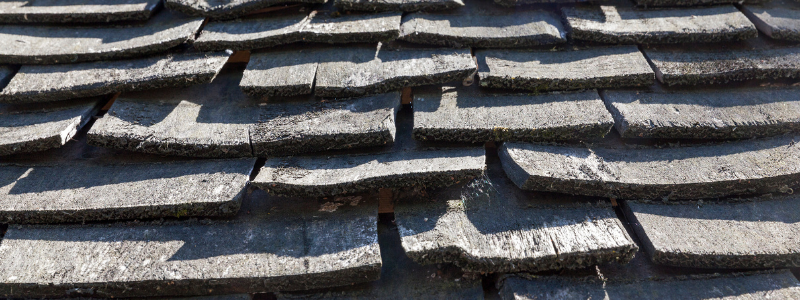
Worn or Missing Shingles
No matter what the house looks like, if you notice that there are missing shingles along the roof, large spaces where moss is growing over the shingles, sagging, or stains along with the ceiling and interior walls, you should walk away.
Each one of those problems can be dealt with. But, more often than not, the cost of repairing those problems is significant and, in the end, not worth the money, when buying a house with a 20-year-old roof.
Depending on the significance of those problems, you may end up having to replace the roof in its entirety, before you’re even able to enjoy the comfort of the home.
Your Homeowners Insurance Policy
Even though home insurance will cover – depending on the policy – roof repairs and replacements, there are a lot of home insurance policies that won’t cover roofs over twenty years old. Most of these policies work in one of two ways; they either won’t write a new policy for a roof that is over twenty years old or, for you to keep your old policy, they require the twenty-year-old roof to be replaced.
The attributes mentioned earlier are what to look for so that you know when to walk away. But, there are a few attributes to look for that indicate the roof you are looking at, even though it is old, remains strong and sturdy. These attributes include things like all of the shingles being present, the roof being perfectly even, clean and sturdy gutters; among various other things.
If you notice these attributes, then that’s a great sign, as it means the roof has been well-taken care of and should last for a while. But, that doesn’t necessarily mean repairs won’t be necessary, either now or in the relatively near future.
The Lifespan Of A Typical Residential Roof
A typical residential roof is meant to last for a specific period of time. But, this specific period of time varies from roof-to-roof, depending on the materials that the residential roof is made of. Being aware of the lifespan that certain roofs offer makes it easy to determine when your new house’s roof – or any roof, for that matter – will need to be replaced.
Every residential roof is meant to last for a certain amount of time. The exact amount of time that a particular residential roof is meant to last for depends entirely on the materials it is made of. Because of this, there are some roofs that can easily last for thirty years, and some that will fall apart long before that.
When buying a house with a 20-year-old roof, take into consideration what materials make up the roof of your potential new home.
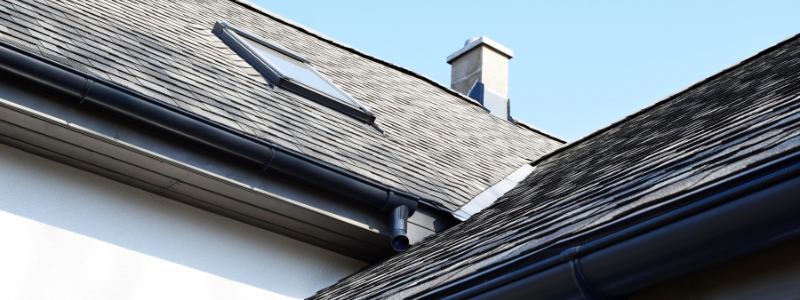
Asphalt Shingle Roofs
Most residential roofs make use of asphalt shingles. The reasons for this are quite simple: asphalt shingles are very affordable, and they often come with good warranties. More often than not, an asphalt shingle residential roof is meant to last for fifteen-to-thirty years. But architectural shingles, which are, essentially, enhanced asphalt shingles, can last for twenty-five-to-thirty years.
Other Material Roofs
Some of the more long-lasting materials are tile, slate, and copper. Roofs that make use of those materials can easily last for up to fifty years. Many other metal materials can last for fifty years, or a lot longer, depending on their overall quality.
If it’s asphalt shingles, you should expect a complete roof replacement. If it’s slate, metal, or other materials, you may have some extra time before a replacement is needed, but repairs may still be necessary.
B&M Roof Inspections
Regardless of the material that your residential roof is made of, though, B&M Roofing is here to help. By contacting us today, you can organize an inspection. Even before buying a house with a 20-year-old roof.
During this inspection, we will consider any flaws that your new home’s roof possesses, then we will tell you the repairs that are necessary, and perform those repairs. That way, no matter what it’s made of or how old it is, your roof will be in tip-top shape.
How to Stop a Roof Leak Temporarily
At B&M Roofing of Colorado, we understand that figuring out how to stop a roof leak can be a homeowner’s worst nightmare. Watching water seep through your roof and cause damage to your home can be incredibly stressful, especially while waiting for emergency roof repairs. That’s why we offer prompt emergency roof service requests to address your needs quickly.
In the meantime, we want to help you minimize further structural damage while you await our crew’s arrival. Here are some temporary measures you can take to manage a roof leak until we can perform more permanent repairs. Your home’s safety and protection are our top priorities, and we’re here to support you through this challenging situation.
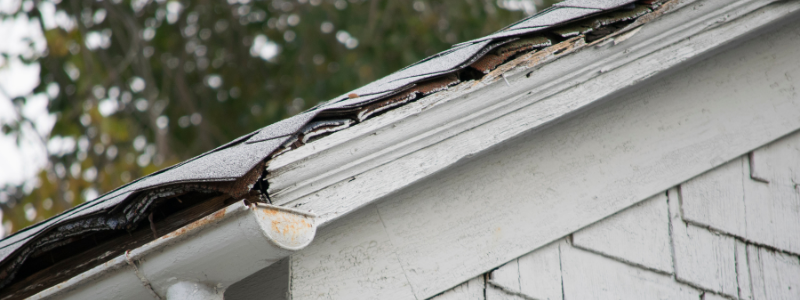
Common Signs of a Leaky Roof
Identifying a leaky roof can be crucial to maintaining the integrity of your home. There are several telltale signs that your roof may need repairs.
First, check for water stains on the ceilings or walls inside your home. These yellowish-brown spots often suggest that water is seeping through the roof and can indicate a developing issue that needs immediate attention. Another sign to look out for is missing, cracked, or curled exterior shingles. A damaged roof can allow moisture to penetrate, leading to leaks. Walk around your house or use binoculars from a safe distance to inspect the shingles closely.
Pay attention to any unusual drafts or increased energy bills. If your roof is not effectively insulating your home, it can lead to higher heating and cooling costs. Additionally, notice any signs of mold or mildew, particularly in the attic or near the roofline. These fungal growths thrive in damp conditions and can clearly indicate water intrusion. Finally, after heavy rain or snow, check your gutters and downspouts. If water is overflowing or pooling around the foundation, it could mean your roof drainage system is compromised, possibly due to leaks.
By being on the lookout for these signs, you can proactively address any potential roofing issues before they escalate into more significant problems. Regular inspections and maintenance are key to prolonging the life of your roof and protecting your home. Identifying a leaky roof can be crucial to maintaining the integrity of your home. There are several telltale signs that your roof may need repairs.
These are just some of the most common areas to look for roof leaks, but there are more tell-tale signs of missing shingles, mold or mildew, rotted wood, and discoloring on the ceiling side of your home.
Temporary Leaking Roof Repair
At B&M Roofing, we understand that water naturally flows downhill, and often, the lowest point for drainage can be located above your ceiling. To effectively manage drainage and reduce the risk of water damage in your attic, it’s crucial to identify the wettest area of your roof, which may appear as a bulge if the leak has been neglected for some time.
By carefully puncturing this bulge with a finish nail or a similar small tool, you create a pathway for the trapped water to escape into a bucket below. This proactive step can significantly alleviate water damage and is much more manageable than the extensive repairs required for a severely water-damaged ceiling—Trust B&M Roofing to provide effective solutions for your roofing needs and prevent further damage to your home.
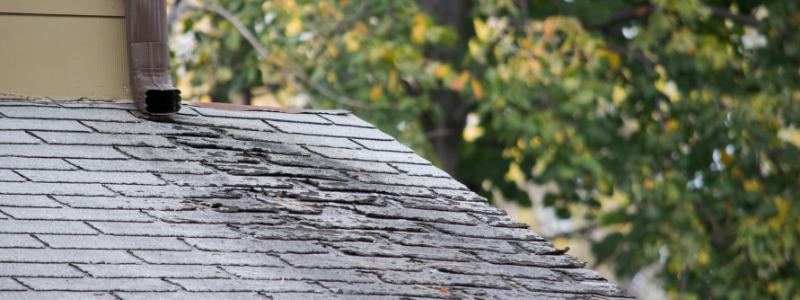
Locating the Roof Leak
At B&M Roofing of Colorado, we know that the most challenging part of addressing a leaky roof is pinpointing the source of the leak. Once you’ve identified the leak, finding a temporary fix becomes much simpler.
If you’re comfortable, we recommend inspecting your attic to check the roof deck, which is the underside of your roof. Leaks often originate from joints between plywood. It’s important to note that the leak may not be located directly above or below where you observe the water damage.
If the leak isn’t immediately visible, we have an effective method to help you locate it, though caution is key. Water can travel along your roof before it starts to show in your ceiling, so it’s crucial to find the source of the leak before it leads to extensive damage. The best time to search for a leak is when there’s water running on your roof.
Don’t wait for a heavy rainstorm to cause significant water damage. Instead, control the water flow using a garden hose on the roof. A small amount of water in targeted areas can help you locate leaks. Ideally, have someone else in the attic with a flashlight to spot any moisture – the water will reflect the light, making the leak easier to see.
If you don’t have access to an attic, you can look for clues by pouring water on areas like flashing, ridge caps, roof valleys, and gutters or downspouts. If possible, set up a bucket in your attic to catch dripping water and prevent further damage to your home.
Remember that patching a leak from the underside of the roof deck using tar, shingles, or plywood is only a temporary solution. It’s crucial to address water intrusion promptly to prevent additional property damage.
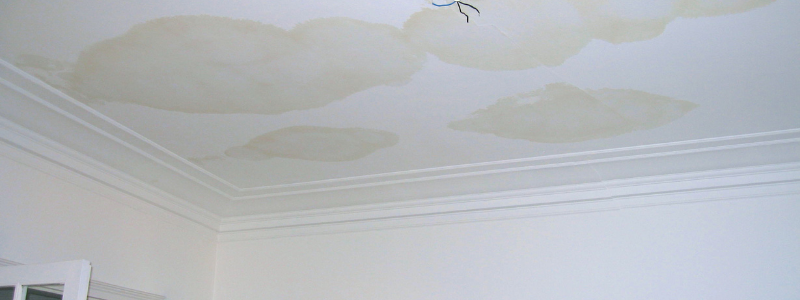
Get Started With Expert Roofing Services Today!
At B&M Roofing of Colorado, we understand that knowing how to fix a leaking roof temporarily can cause significant stress and more extensive damage if not addressed promptly. That’s why we prioritize immediate response for our customers. Our dedicated emergency response teams are always on standby, equipped, and ready to tackle leaking roofs whenever and wherever you need us.
If you’re facing a roofing emergency, you can rely on our expertise to provide swift and practical solutions. Don’t let a slight leak become a significant issue—reach out to us without hesitation. Contact us today or conveniently fill out our emergency service request form on our website. Our experienced team is here to ensure your home is protected and safe—Trust B&M Roofing to be your dependable partner in preserving the integrity of your roof.
Assessing Wind Damage To Asphalt Roof Shingles
It’s no secret that Colorado, especially in the Winter and Spring, can be a very windy place. Unfortunately, where there’s wind there’s often wind damage. Many homes and businesses in Colorado use asphalt roof shingles, and while asphalt roof shingles look very pretty and tend to be quite durable, they are vulnerable to strong winds.
Since Colorado experiences strong winds on a regular basis, it’s important to be familiar with the effects of wind damage. Assessing wind damage to asphalt roof shingles is essential in keeping your roof protected during Colorado’s nasty storms. The earlier you spot the damage, the easier and faster the repairs will be.
What Are The Effects Of Wind Damage On Asphalt Roof Shingles?
These days, asphalt roof shingles are some of the most popular roof shingles available. It isn’t difficult to figure out why, since asphalt roof shingles look pretty, while also being super affordable and very durable. But, even though asphalt roof shingles are quite durable, they are vulnerable to wind damage and, if they experience strong winds on a regular basis, they can begin to break down.
Today, asphalt roof shingles are some of the most popular roof shingles available. While they may not last as long – fifteen to thirty years, more or less – like other kinds of shingles – wooden shingles, for example – they offer significant durability and affordability.
Even though asphalt roof shingles are quite durable, though, strong winds can damage them with relative ease. When strong winds are present, asphalt roof shingles often suffer from a few different kinds of wind damage.
Bent Roof Shingles
As large gusts of wind move across a roof, the asphalt roof shingles will be pushed and prodded in various directions. Sometimes, depending on the intensity of the wind, the strong winds don’t do much of anything. More often than not, though, the strong winds cause the asphalt roof shingles to bend or detach, if only slightly, from the roof.
Asphalt roof shingles should never be bent since this causes them to break down and become weaker and weaker. But, if they’re only bent once or twice, due to infrequent wind, then there often isn’t much of a problem. If they are bent more than once, though, on a relatively frequent basis – for example, every other day during the Winter or Spring season in Colorado – then the asphalt roof shingles will begin to break down much quicker than they normally would. This shortens their lifespan while also lessening their ability to break the interior of your home from things like rain and snow.
Detached Roof Shingles
Every asphalt roof shingle serves an important purpose, and this important purpose is that of keeping the interior of your home protected from the elements. If one of the asphalt roof shingles is missing, it isn’t good, but it doesn’t mean that your home is completely unprotected. If multiple asphalt roof shingles have become completely detached from the roof, due to strong winds, then certain parts of your roof are completely unprotected.
Even if none of those asphalt roof shingles are completely detached, this doesn’t mean they won’t be. When strong winds move across asphalt roof shingles, causing them to detach just slightly from the roof, the bond between the roof and the asphalt roof shingle is broken down. As a result of this, it’s easier for wind, snow, and rain to seep into the roof, while also being easier for the asphalt roof shingle to fly off of your roof entirely.
- Asphalt roof shingles are incredibly popular due to their aesthetic beauty, affordability, and durability
- Despite being quite durable, though, they can easily suffer from strong winds and experience significant wind damage
- As strong winds move across asphalt roof shingles, they often push and prod those shingles
- By pushing and prodding those shingles, it can cause them to bend or detach from the roof
- If the shingles bend, this causes them to begin breaking down
- If they continue to bend, due to frequent bouts of strong wind, they break down even further until they are no longer able to protect the interior of your home
- Strong wind can easily cause asphalt roof shingles to detach from the roof
- If they detach from the roof only slightly, they are no longer fully bonded to the roof, allowing rain, wind, and snow to seep into your home
- If they are completely detached from the roof, then the roof is unprotected
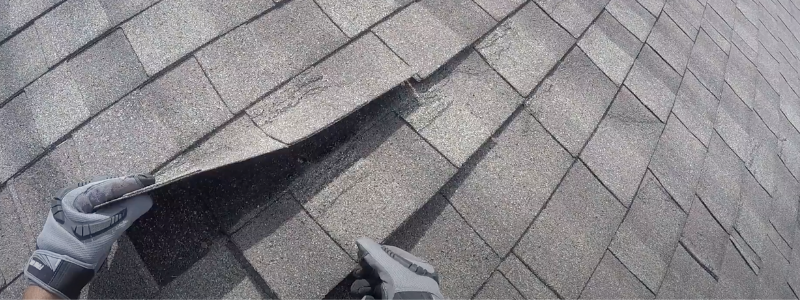
How Can You Assess The Wind Damage That Asphalt Roof Shingles Have Experienced?
Assessing the wind damage that asphalt roof shingles have experienced isn’t always easy, especially since the effects of wind damage aren’t always very noticeable. If you go onto your roof and assess the asphalt roof shingles carefully, while looking for a few key things, it shouldn’t be too hard to assess whether or not your asphalt roof shingles have been damaged by the wind.
Assessing the wind damage that asphalt roof shingles have experienced can be a challenging task. Most of this is due to the fact that the effects of wind damage aren’t always noticeable – noticing a slightly detached roof shingle is harder than it sounds, for example. But, there are a few key things to look for. If you notice these things, then there’s a good chance that your asphalt roof shingle has suffered from wind damage.
Look for Debris
The first thing to look for is debris. If there is any debris on any of the asphalt roof shingles along your roof, then take note of that debris. Most of the time, this debris will be quite small, so it shouldn’t have had a significant effect. But, if it’s a larger piece of debris – a big tree branch, for example – then make sure to inspect the roof shingle. If the shingle has been bent, detached, or crushed, then that asphalt roof shingle must be replaced.
Look for Damaged Roof Shingles
The second thing to look out for is any asphalt roof shingle that has a crease on it. If an asphalt roof shingle has been pushed off of the roof, if only slightly, and bent, then there’s a good chance it has pushed against another shingle. When this happens, a crease is left behind, and this crease usually looks like a slightly messy line or scratch across the shingle. If you notice a crease, then check to see if the creased shingle is loose at all. If it isn’t, check the shingles to the sides, because those may have bent and then scratched the creased shingle.
Look for Detached Roof Shingles
The third and final thing to look out for is any asphalt roof shingle that appears slightly detached from the roof. If an asphalt roof shingle doesn’t appear to be lined up with the shingle behind or in front of it, then that’s a sign that it’s been detached from the roof. By inspecting that shingle, you will be able to determine whether or not it has been detached, if only slightly, from the roof.
Trust the Experts in Wind Damage Roof Repair
If you just aren’t sure what to look for or how to look for it, then there’s no need to worry. At B&M Roofing, we offer a free inspection. By hiring us, we will look at your roof and determine whether or not any wind damage has taken place. From that, we will begin formulating a plan on how to fix that wind damage in the best and most affordable way possible!
- Assessing the effects of wind damage to asphalt roof shingles can be difficult
- If you take the time to look for three key things, though, then it’s usually much easier to notice and assess the wind damage that has taken place
- If there is any debris on the asphalt roof shingles, inspect the shingle and make sure it hasn’t been bent, crushed, or detached
- For bent shingles, notice if any shingles have a crease running across them,
- If they do, inspect the shingle and the shingles around them to see if any of them are slightly detached or bent
- Take the time to look for any asphalt roof shingles that look slightly detached
- If they look slightly detached, there’s a good chance that the wind has weakened the bonding between them and the roof
- At B&M Roofing, we offer a free estimate that will help you assess the wind damage to your asphalt roof shingles while formulating a plan for safe and affordable repairs
30 Year Roof Shingles
Today, you can find roof shingles that are designed to last for specific periods of time. Periods of time such as 15 years, 20 years, and 30 years, among others. Right now, 30-year roof shingles are quite popular due to costing less than longer-lasting roof shingles, while also lasting a fairly long time, being made of strong materials, and being able to withstand Colorado’s intense weather.
What Are 30-Year Roof Shingles?
In today’s roofing market, there are many different roof shingles that you can purchase. Most of these roof shingles are designed to last for a very specific period of time. You can easily find roof shingles that are designed to last for 15 years, 20 years, and 30 years, among other shingles that last even longer lengths of time. Each one of these roof shingles is designed a little differently, due to the materials that they use, their length, and the durability that they offer.
It is no secret that a new roof – or even just roof maintenance and repairs – are relatively expensive. It is also no secret that due to Colorado’s frequent bouts of intense weather, roof repairs and replacements are not uncommon.
Right now, there is a wide variety of different roof shingles that you can purchase. Most of these roof shingles are designed to last for a specific period of time. Each one of these roof shingles is designed to last for the exact amount of time that they advertise, and to do this, they are often thicker than shingles designed to last for less time and they are also made of slightly different materials.
Just as the name implies, then, they are ones that are designed to last for 30-years. Since they are designed to last for 30-years, they are thicker and stronger than other roof shingles. This not only allows the roof shingles to last longer, but it also makes common forms of weather damage – snow and ice roof damage is quite common in Colorado – which, of course, allows your roof to last for longer while reducing the need for repairs.
- Roof maintenance and repairs aren’t always cheap
- Colorado experiences frequent bouts of intense weather, leading to the necessity for roof repairs and replacements
- There are a wide variety of different roof shingles that can be purchased, these roof shingles are often designed to last for specific periods of time
- Some of the most popular roof shingles are 30-year roof shingles
- They are durable – designed to last for 30 years; they are thicker and stronger than other roof shingles, allowing them to last longer and to protect roofs against Colorado’s intense weather
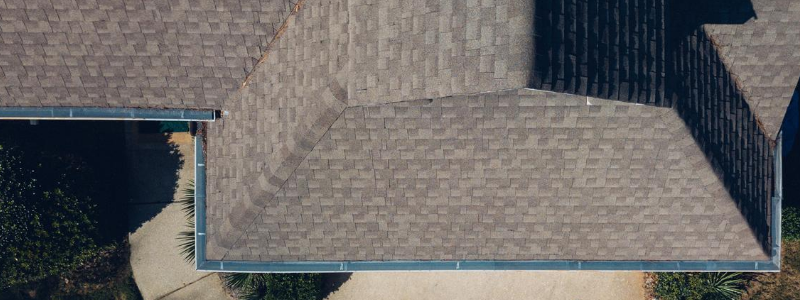
What Sets Them Apart From Other Shingles?
If you compare them to, for example, 15-year roof shingles, you will notice a few differences. None of these differences is particularly large, or even that noticeable, but they transform the durability and stability of your roof. Because of this, 30-year roof shingles are stronger and sturdier than 15-year roof shingles.
The most notable quality that sets 30-year roof shingles apart from roof shingles that have been designed to last for shorter periods of time is their thickness. If you look at 15-year shingles, you will find that most of them are relatively thin with few layers. Most of them are strong enough to handle intense weather, and they can last for 15-years, but they aren’t thick enough to protect against especially intense weather or to last for much longer than 15-years. But, 30-year roof shingles can be twice the size of 15-year roof shingles due to their enhanced thickness.
To ensure that each layer is connected to one another in a sturdy manner, 30-year roof shingles use better adhesive and lots of it. Most 15-year roof shingles use good adhesive, as well, but they often use less of it and the durability of the adhesive is often not to the standard of a 30-year roof shingle.
For roof shingles to be sturdy and durable, they must use strong materials. More often than not, 30-year roof shingles use the same basic materials that 15-year roof shingles use. These are materials such as wood, asphalt, and slate; among various others. But, most 15-year roof shingles use recycled materials, whereas 30-year roof shingles use new materials. That way, the shingles that comprise the roof are stronger and sturdier. Plus, there is less filler within the shingle.
The last difference that must be considered is the price. Just as you would expect, 30-year roof shingles are more expensive than 15-year roof shingles. Much of this is due to the materials that comprise the shingles as well as their thickness and density. These factors lead to roofing shingles that cost more money, yet last longer than 15-year roof shingles and, generally speaking, serve as a great investment.
- The main difference that sets these apart from other roof shingles is the thickness
- They are much thicker than 15-year roof shingles, among others, and that’s because they have more roofing layers
- More adhesive is used than other roof shingles; that way, each layer of shingle is connected to one another
- 30-year roof shingles often use the same materials that other roof shingles use, but they use less recycled material and there’s less filler in each shingle
- The price of 30-year roof shingles is more than that of a 15-year roof shingle, due to the density and material
Are 30-Year Roof Shingles Right For You?
A roof is an investment, and this is especially true of the shingles that comprise the roof. If you do not wish to spend a lot of money and have no need for an especially-strong or long-lasting roof, then this type of shingles may not be very useful to you. If you would like your roof to last for many years, and you would like to minimize the need for roof repairs, then they may just be right for you.
A good roof is a significant investment. But, the dividends that this investment can pay off are often more than worth the initial costs.
When you invest in them, you get roof shingles that are strong, sturdy, and long-lasting. By doing this, you ensure that your roof will last for a long time, with minimal issues, and that the interior of your home is protected.
For many people, this makes 30-year roof shingles a great investment. But, they can be expensive, and if you are uncertain as to whether or not you will move, then they may not be a great choice because they affect very little of your home’s resale value.
The best way to determine whether or not 30-year roof shingles are right for you is to concern your needs and wants, as well as your budget.
Here, at B&M Roofing, we can help you ask and answer those questions. Then, when you’re ready for the new roof, we can help you build and install it!
Creased Shingles
In the state of Colorado, intense wind and heavy snow is a very common occurrence. Many Coloradans are equipped to handle drastic weather changes, but homes and businesses can sustain damage during hail, rain, or snow storms. These drastic weather patterns can cause costly repairs, including commercial and residential roof deterioration. Even small tears and bends can lead to leaks and once a leak has set in, it can cascade. In some instances, roof damage may not be extensive or even noticeable. However, for this reason, it’s important to get your roof regularly inspected. An experienced Colorado roof will be able to check for common signs of water stains, curling, and creased shingles. Creased shingles are a threat to the stability and durability of any roof. But, fortunately, they’re easy to spot and, with the help of B&M Roofing, easy to fix.
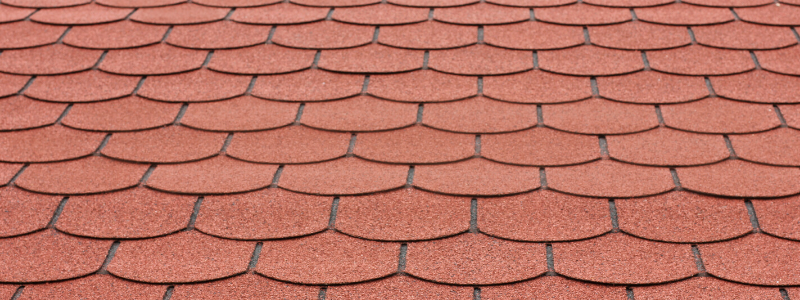
What Are Creased Shingles?
As the name implies, creased shingles are bends in asphalt shingle roofing material. More often than not, creases are one of the most visible signs of roofing deterioration. A damaged shingle, when inspected closely, will provide roofers information helpful to a Colorado roofing inspection or evaluation. Creasing usually occurs in intense wind storms. If the wind finds leverage within the roofing material, it can push shingles up and back down until it forms what is known as a crease. If this process happens repeatedly, a shingle may tear off completely, leaving the material beneath exposed and also vulnerable.
More often than not, the crease on the shingle will begin on one side of the shingle—the right or left—but won’t reach the other side of the shingle. The creasing itself will, most likely, take the form of a faint and slightly-jagged line. Some creased shingles, though, have far more apparent creases that are larger and a bit darker.
Who Do Creased Shingles Happen?
When the wind is moving at an intense speed, it isn’t uncommon for the shingles on a roof to become loose. If the wind is especially intense, it can cause the shingles on the roof to lift up and flap in the wind. As this takes place, there are two things that can happen. One of which is that the wind, due to its intensity, pushes the shingle upwards and creates a very visible crease in the asphalt material. The other is that the loose shingle pushes up against another shingle, and by pushing up against the shingle a crease is formed on more than one.
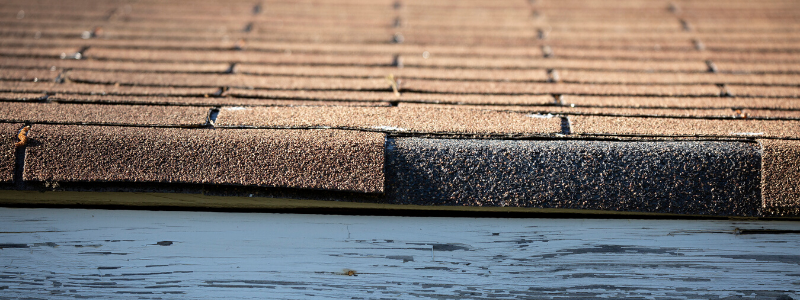
That said, there are other reasons creased shingles are an indication that something “more” might be happening with your commercial or home roof. While high winds are often the culprit of creased shingles, there are instances where other roofing elements might be impacting the health of a roof. As a whole, roofing systems—including the frame, underlayment, sealant, and ventilation systems—should be working together to keep a roof strong and intact. Creased shingles can also happen for the following reasons:
- A sealant is becoming unsealed due to age, product defect, or poor installation.
- Installing shingles late in the year, which prevents the sealant from softening in the warm sun and, thus, it cannot perform as a reliable adhesive.
- The sealant had dirt on it prior to the shingles being installed.
- High overdrive, underdrive, angled, or mislocated placement of a nail.
It’s important to work with an experienced Colorado roofing company that can provide roof installations that are meant to extend the lifetime of your roof.
Wind Can Damage a Residential Roof
Due to Colorado’s intense climate, intense winds are far from an uncommon experience. When there are intense winds, it isn’t uncommon for roof shingles to be lifted from off of the roof, while still attached, and to begin flapping in the wind.
If a roof shingle isn’t bonded to the roof correctly—or, alternatively, if the adhesive has broken down—the wind can move into the open spaces underneath the shingle. When wind moves into these open spaces, it can push the roof shingle upwards, leading to the aforementioned “flapping in the wind”. Flapping roof shingles may begin to bend. A crease can easily form when shingles are bending into unnatural positions or angles. Sometimes, though, the roof shingle doesn’t bend at an unnatural angle. Instead, it pushes up against the roof shingle that is directly below or above it. If it pushes up against this roof shingle with force, then this can cause two creases to be formed on two different roof shingles.
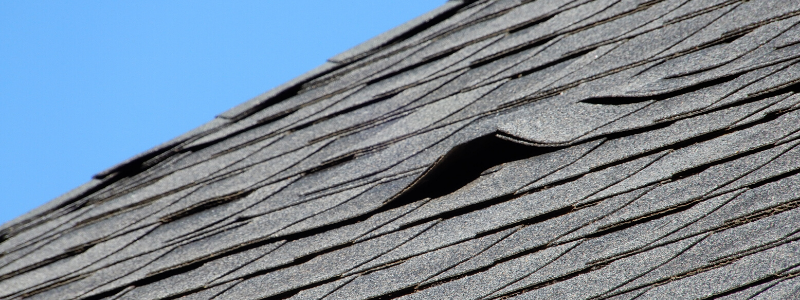
Why Are Creased Shingles Bad?
When your roof has a creased shingle, that means two things. One, it means that there is a pocket of space underneath the shingle that is open, which is how the air got underneath it and lifted the shingle up. Two, it means that your shingle is missing granules, due to the crease. Both of these are quite bad because they directly affect the stability of your roof and its ability to protect the interior of your property.
For a shingle to become creased, it must be lifted off of the roof. But, for this to happen, a strong wind must be able to go underneath the shingle. If there is a pocket of open space underneath the shingle, then a strong wind will be able to do this, causing the shingle to lift up.
When there is a pocket of open space underneath the shingle, it means that the shingle isn’t fully protecting the interior of your property. Things like rain, ice, and wind can flow into your property. If this isn’t taken care of, it can lead to some very significant damages.
As a shingle becomes creased – whether by being bent at an unnatural angle or pushing across another shingle – it loses granules. Granules from the entirety of shingle, and they protect the shingle from the sunlight. If there are fewer granules on the shingle, then that means that the shingle itself will begin to deteriorate, becoming far less effective at keeping the interior of your property safe.
What Is The Best Way To Fix Creased Shingles?
Creased shingles must be replaced and resealed before more damage can occur. Missing granules lessen the stability and safety of an asphalt shingles roofing system and, in turn, your roof and the interior of your property. Missing granules may also allow sunlight to shine down onto the shingle, and this can easily cause the shingle to rot and decay. If this happens, then rain, snow, and wind— and all elements that Colorado experiences frequently—can break through the shingle and wreak havoc on your home. This is something to avoid as it’s both costly and destructive to the inside and outside of the property.
While noticing creased shingles usually isn’t too difficult, replacing those shingles and applying the proper adhesive to them can be difficult. That’s why, at B&M Roofing, we offer services that are dedicated to locating the creased shingles on your roof and replacing them in the most affordable and effective manner possible! If you think you’re experiencing creased shingles on your Colorado roof, give us a call today at (303) 443-5843.
